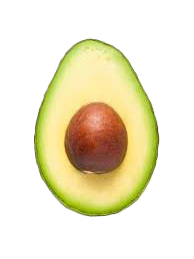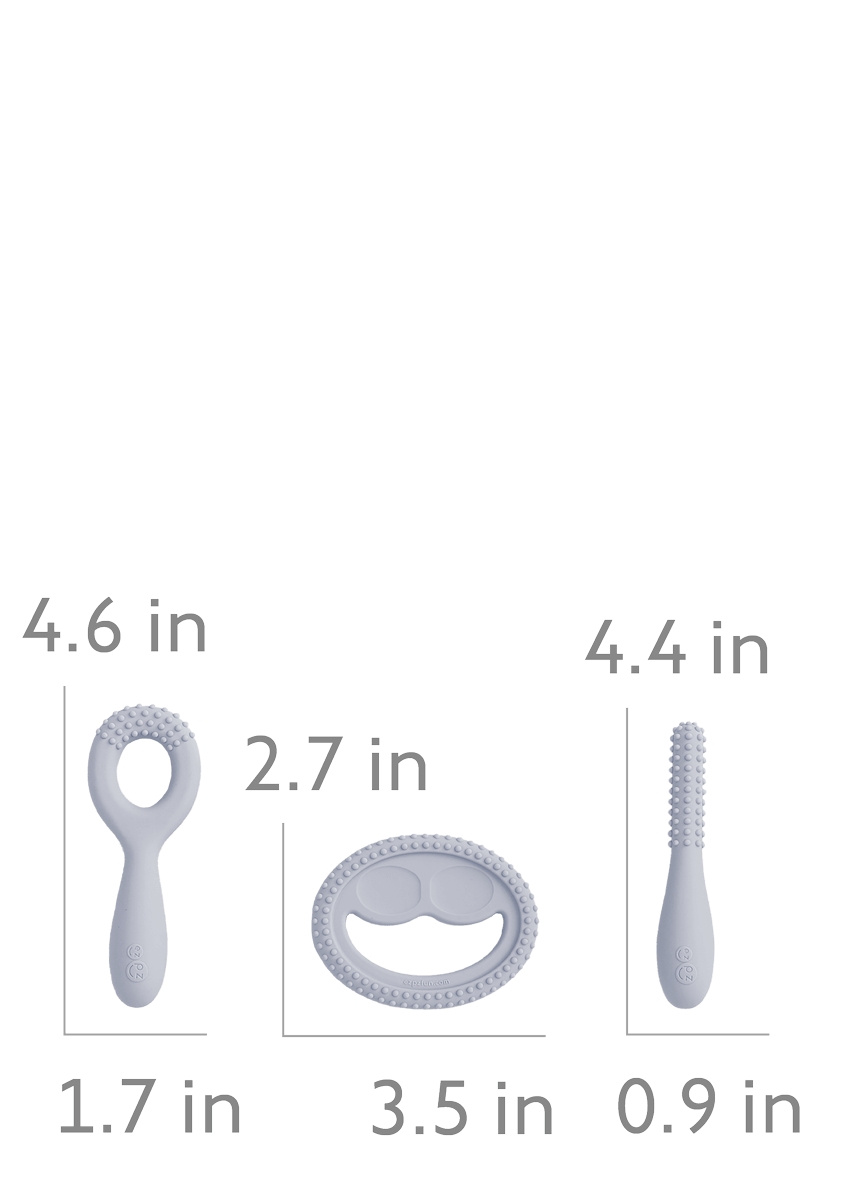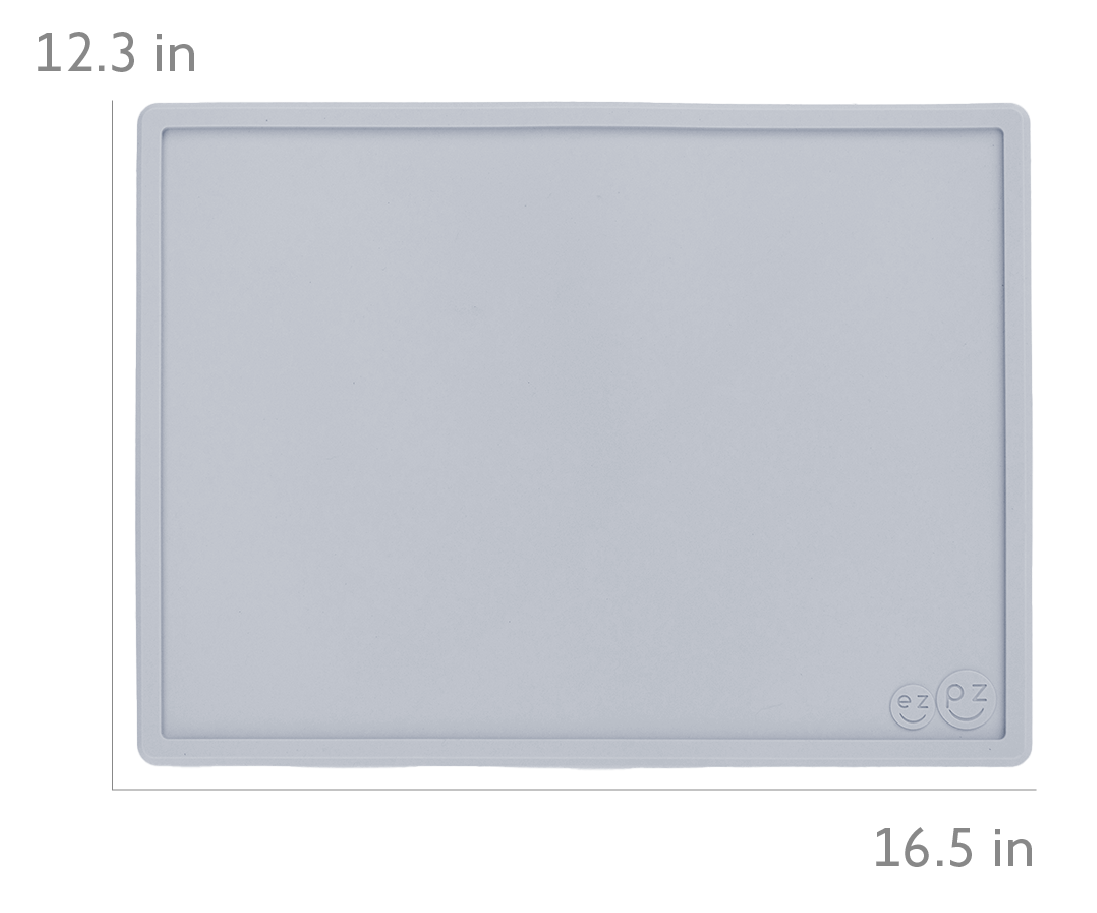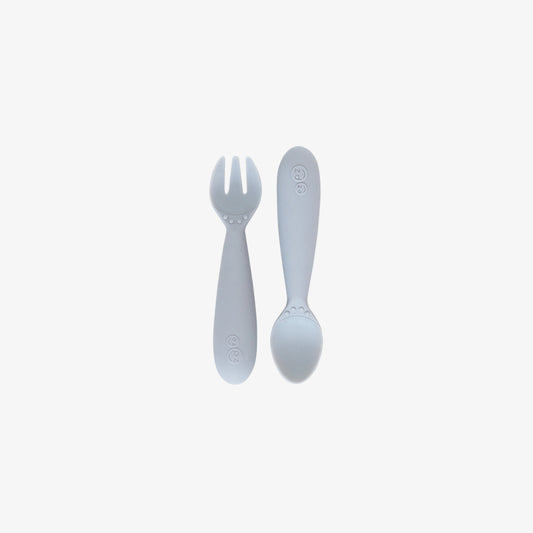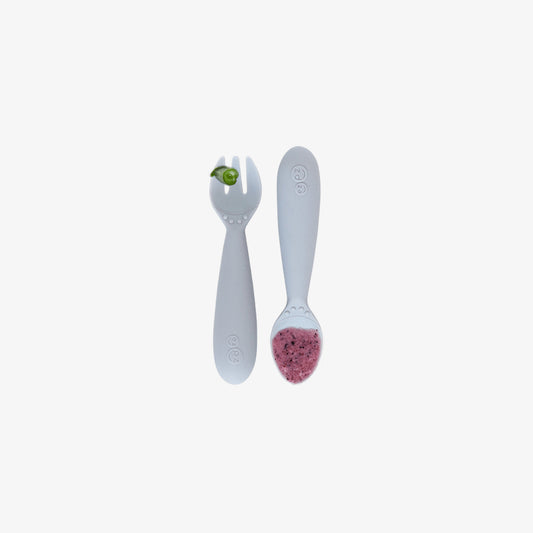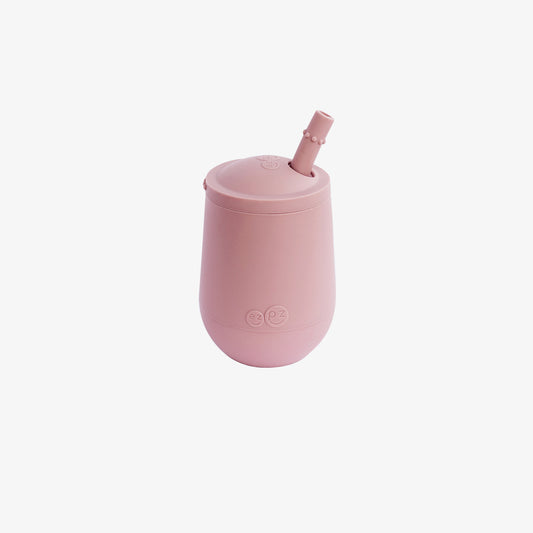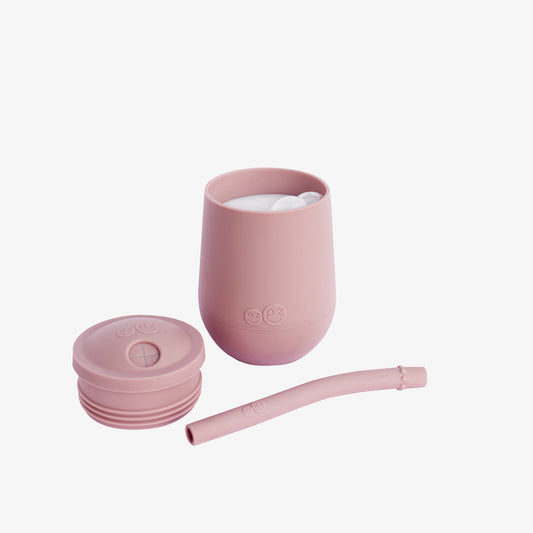Baby-Led Weaning: Food Size for Early + Older Eaters
By Dawn Winkelmann, M.S, CCC-SLP
Speech Language Pathologist & Feeding Specialist for ezpz

Knowing how to cut foods appropriately for a baby’s age and stage is critical for safe swallowing. In addition, the shape of the food is important for establishing self-feeding milestones. As a pediatric feeding + swallowing specialist, I’m sharing food size tips for both early eaters (6-9 months) and older eaters (10-12 months).
Early Eaters: Did you know that the palmar grasp emerges around 6 months of age? This fine motor milestone is perfectly timed with starting solids, and one of the reasons the American Academy of Pediatrics (AAP) recommends waiting to start first foods until baby is 6 months old. At this age, a baby will use the palmer grasp to hold a stick of food in the palm of their hand and slowly (but independently) place it into their mouth.
- Shape: The shape of the food needs to be spear-shaped or stick-shaped (the length and thickness of an adult pinky finger) for the infant to grasp it with their whole hand successfully. This shape will easily fit on a baby's gum line, which will encourage baby to try a munch chew. A munch chew is when a baby easily and safely chews soft, moist foods with their gums (not requiring teeth).
- Safety: It is important for caregivers to remember that we don’t want to block the baby's airway (the opening is about the size of a straw) with a small piece of food. Unfortunately, we often see images on social media of foods (cut up small) being offered to early eaters. Instead, we can use a baby-led approach to feeding. This means that the shape and size of the food needs to be both safe and developmentally appropriate according to their grasp. The grasps for this age range are the palmer grasp and the raking grasp.
- Pre-Feeding Practice Without Food: You can practice these mouthing + grasping skills with your baby before they start solids (3-6 months of age) by utilizing the ezpz Oral Development Tools. The ‘stick’ oral development tool is the size and shape of a baby-led piece of food, so it offers great pre-feeding practice of using the palmer grasp (to hold it) and positioning it onto their gum line, which is where the food would be placed!
- Feeding Practice with Food: At the beginning of the meal (before you offer spears of soft foods), dip the Oral Development Tools into a puree to help baby practice oral and fine motor movements. This feeding technique may help your baby motor plan a munch chew easier, which can help make chewing and swallowing more successful. And less messy too!
Older Eaters: A pincer grasp emerges around 10 months of age. This is when your baby uses the tips of their thumb and index finger to pick up food or an object. This mature grasp is needed to pick up small pieces of food quickly and successfully to satiate their hunger cues fast enough.
- Shape: We don’t introduce smaller sized cubed pieces of foods to older babies until they have been successful with spears of soft foods and have had a variety of tastes, textures, tints (colors) and temperatures. In addition, we are looking to see if they have performed fine motor (pincer grasp) and oral motor (tongue lateralization) milestones that are critical for feeding success. These skills are the building blocks for advancing from spears and sticks to smaller cubed sized pieces.
- Safety: If your 10-month-old baby has not obtained their true pincer grasp milestone, then they may still be using their raking grasp (a 7-month-old grasp). If that is the case, do not offer small pieces of food quite yet. This is due to the risk of overstuffing and potential choking risk as they will rake ‘fists full’ of the small pieces. In the meantime, continue to offer strips of food at mealtime and practice the pincer grasp during play. In no time, your baby’s pincer grasp will develop, and you can serve food in small cubes rather than long sticks.
- Feeding Practice With Food + Liquids: Tongue elevation (tongue lifting to the roof of the mouth) is mastered by baby drinking from an open cup, straw cup, eating purees from a baby-led spoon and munching soft baby-led strips of food. This tongue movement helps to prepare the next stage of range of motion, which is tongue lateralization (tongue moving from side to side inside the mouth). This movement is essential for babies to eat small pieces of food safely, as the tongue needs to sweep the mouth from side to side to collect small food particles to swallow and avoid choking on them.
Preparing food for a baby’s age and stage is one of the first steps in choking prevention. I hope these food size tips help you and your baby have successful and fun mealtimes together! #ezpzfun
Shop the Article

Happy Feeding!
Dawn Winkelmann (M.S, CCC-SLP) is ezpz’s Pediatric Speech-Language Pathologist and Feeding Specialist. She has 28 years of experience teaching parents and medical professionals how to start babies on solids safely and encourage toddlers to overcome picky eating tendencies. In addition, “Ms. Dawn” is the designer of our award-winning feeding products.


